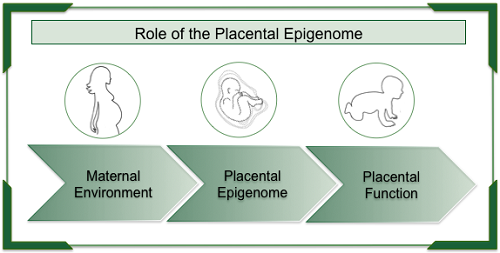
There is mounting evidence that the environment experienced by a pregnant woman can have a profound influence on the health of her child both at birth and throughout that child’s life. Our project is focused on trying to understand, at the molecular level, how environmental signals and exposures during this short period of development can impart these lifelong impacts. We are specifically examining the importance of the placenta in delivering these environmental signals to the developing child and how the environment can alter the way the placenta functions.
The placenta is the first complex organ to form and serves as a critical interface between the developing infant and his or her mother. This organ facilitates the passage of nutrients, water, gases, and waste between mother and infant, but also plays other important roles during development. The placenta produces specific hormones, growth factors, and neuropeptides which direct fetal development, and also through production of various enzymes, receptors, and transporters, controls the types of chemicals and exposures that can pass from mother to infant.

We are also examining the epigenetic regulation of genes in the placenta by utilizing genome-wide studies of DNA methylation. These studies will pinpoint critical genes and pathways altered by arsenic and other environmental exposures and can ultimately be linked to growth and neurobehavioral outcomes in the child. Studies such as ours, will allow us to better understand the molecular mechanisms at work mediating the maternal environment’s role in child health. Such findings, we believe, could eventually be translated into novel targets for therapeutic intervention or applied as molecular diagnostics to identify children at risk at birth so that appropriate and useful interventional strategies can be initiated.